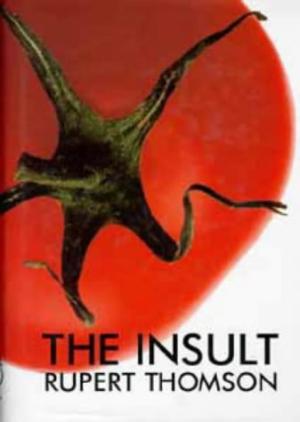George
I started this month with another classic I should have read in the form of Slaughterhouse Five. This is one of those books which I’ve always been aware of but only relatively recently known any detail of, despite its fame. Which is probably why my friendly neighbourhood bookseller had to nudge me out of the SF section and towards the literary shelves to find it. Yep, one of those ones.
But does it deserve this reputation as a work of, dare we say it, literature? Well, yes. It’s about Billy Pilgrim who comes unstuck in time and starts to live his life in a non-linear fashion. It’s perhaps most famous for its basis in Vonnegut’s direct experiences of the bombing of Dresden and is a superb piece of writing around dissociation, trauma and handling the colossal events humanity caused in a few decades last century.
It’s deliberately beguiling to the point of including an opening chapter where Vonnegut explains that he’s about to write a book, and what it will be about. So post-modernism abounds, but in that joyous moment before it all got a bit too clever for itself. Vonnegut dismantles the narrative because Pilgrim has been dismantled by the war. No one can begrudge him his sojourn on Tralfamadore, or his laissez-faire attitude after what he’s seen. Neither can you fault the resentment he causes in fellow soldiers. It’s many things at once, funny, sad, weird, true and full of total fabrication. And it definitely includes science fiction. So it goes.
I also read Vonnegut’s Cat’s Cradle later in the month, which was acerbic and enjoyable but a less intimate experience. It follows an author researching the life story of the fictional inventor of the atomic bomb and ends up at the end of the world via an island not entirely unlike Cuba and a rather cynical new religion. It’s a novel of ideas where Slaughterhouse Five is about the character. Some of the skits were excellent, in particular the explanation of how researchers invented the idea of ice-9 – there’s a wonderful trail of logic through the idea being nonsense made up to please an army general, which then gets properly researched until it is actually created. That line between magic and science turns out to be pandering idiocy.
Next was Rupert Thomson’s The Insult, which lives up to his high standards as a prose stylist. Thomson excels at creating the world as you know it and then, very slightly, very slowly, knocking it off-kilter. So our protagonist here, who is blinded by a gunshot to the head, quickly discovers he can see in the dark and promptly leaves his family to live in a hotel somewhere. It’s a familiar setting but you never find out where, it all seeming like a cross between a nameless American city and Blackpool. It's an unpredictable and discomforting story too. To say more would be to spoil the subtle disquiet at work here. If you haven’t read Thomson before he’s well worth a go – Soft is my favourite to date, but really pick anything and you'll be on to a winner.
Catching up with my And Other Stories subscription brought me up to the Argentinian, Haroldo Conti’s Southeaster. Conti is a particularly interesting writer, who wrote for film more than novels. He also disappeared in 1976, along with thousands of others, only a couple of months after the coup. Like Heart of Darkness if you strip out Marlow’s obligations of duty, Boga is a fisherman subsisting in an Argentine delta. It’s a slow burn that drifts, seemingly aimlessly, until you lift your head and realise you are in very dangerous waters. If anything it felt like a warning to the feckless, as Boga slides out of what he knows. I could have done with a couple more names to unpick some confusing scenes – the guy, the little fella, the man all merging – but that’s a small issue in a crafty book.
Haroldo Conti, picture from 3:AM Magazine
Finally. I caught the weird and unrelenting Beyond the Horizon by Ryan Ireland. This is a bleak and violent dismantling of the Western and, as a consequence, American civilisation. Featuring archetypes such as the man, the stranger, the commander and the Indian, it is set in and under a vast protean landscape. It’s all epic conflicts, mythic spaces and primitive man. The writing is striking stuff, reminiscent of Cormac McCarthy and whilst it’s an unrepentantly violent book it’s also very good.
My phone read this month was Liu Cixin’s Of Ants and Dinosaurs, a parable of the relationship between innovation and industry, labour and capital and the like, which is cute but perhaps best suited for a young audience.
GARY
I began April up in Liverpool reading at an event called Spirits of Place, celebrating the intersections of folklore, literature, art, history and archaeology. The headline speaker was the horror legend Ramsey Campbell, who rather endearingly was hauling around a suitcase of his own books for sale at the bargain price of £5 a pop. I’d been a fan of his short fiction for a while, but to date had only read two of his novels. This seemed the perfect opportunity to remedy this situation, so April has been, alongside reading submissions of course, a Ramsey Campbell month.
Creatures of the Pool is a condensing of all the folklore, history, ghost stories and weird bits of information Campbell has accrued about his native Liverpool over many years – the product of years spent haunting second-hand bookshops, delving into the local history sections and gathering as much information about a specific place as possible. He then adds his own invented myths and stories, admitting now that he is unsure whether certain parts of the book were lifted from an obscure source or purely the product of his own imagination. This is what makes the novel so interesting to me, this latticework of stories that make up a city as much as any map, as much the bricks and mortar which often are outlived by the stories they spawn. The sense that we are the products of the places we grow up in, but that we then feed back into that collective narrative with our own fictions and biographies.
The book is in some ways an attempt to revive a theme from H.P. Lovecraft's 'The Shadow over Innsmouth', with its insinuations of disturbing amphibian-looking people originating from the Pool of the title ,with obscure motives, a dark history and unusually flexible body parts. But like the best of Campbell's work I've read, and very much in keeping with his other 'comedies of paranoia’, much is left unsaid. The horror stems just as much from the fractured mental state of the first person narrator Gavin Meadows, a Liverpool tour guide who is coming undone in a city of perpetual rain and dripping damp. The weight of a city's history becomes the source of terror, especially all the half-remembered possible truths and the things we know exist but don't have suitable explanations for. I'm sure every city has an equivalent, but Campbell uses something very real (and really weird) to great effect in the novel – namely the Williamson Tunnels that wind under the Edge Hill area of the city. Built by eccentric businessman, Joseph Williamson, between 1810-40, no one I have spoken to can agree on a consensus on why they exist. But exist they do, and they become a perfect symbol of that buried history we know is there but just can't fully get our heads around. This is one of the best novels I've read lately that takes a specific real location as its subject, and I throughly recommend it.
The Darkest Part of the Woods had been on my radar for a few years, falling as it does into the category of ‘folk horror’ that is growing ever stronger in popularity right now. It’s interesting firstly for Campbell’s return to the fictional Brichester area of the Severn Valley, where he set his very early Lovecraft-pastiches that made up The Inhabitant of the Lake & Other Unwelcome Tenants. Fictional areas of real countries offer a great deal of potential (think Ulverton, Wessex, Scarfolk, Hookland etc.) to explore a specific aspect of a nation without getting bogged down in too much attention to local detail. You can’t offend the local history society of a place that doesn’t exist.
So setting the novel in Goodmanswood near Brichester allows Campbell to explore the idea of the forest and the fears that it contains, as much as any real place in the UK; or flip it around – it’s every patch of forest and woodland in England.
Unsurprisingly, something evil lurks in the woods. Something of the cosmic-horror variety in fact (Rust Cohle would love the place). The Romans knew enough to raze the prehistoric circle that once stood in the wood and allow the trees to colonise the space. Sixties burnouts fill the local psychiatric wards, having fried their brains on the hallucinogenic moss growing on the trees. A nephew gets too friendly with his aunt, some skeletons that we could describe as ‘wrong’ are found, and a lot of bad things happen – but again, with just enough suggestion to imply something truly terrible without sucking out the fun of horror like this by explaining away everything in a tidy fashion.
This is why I like Campbell’s work (and, I suspect, why some seem to hate him). If you like ambiguity and suggestion with your weird fiction, with as many questions as answers, combined with a strong sense of place, you should be reading his stuff.
I've also just started Werner Herzog's Of Walking in Ice, a short account of the legendary director's decision to walk from Munich to Paris in the winter of 1974, to visit a dying Lotte Eisner, Herzog's friend and mentor. For a man who had a ship dragged over a mountain, this all seems entirely logical.






